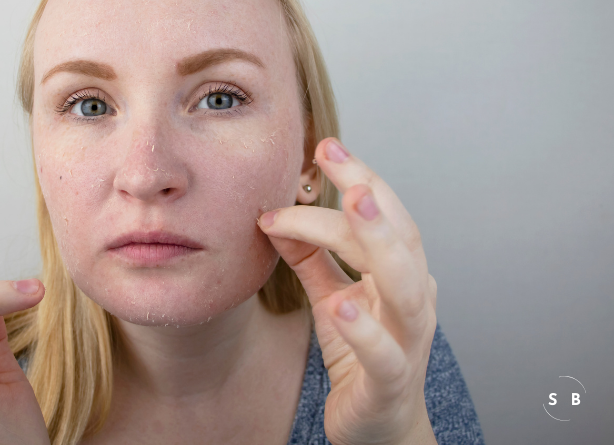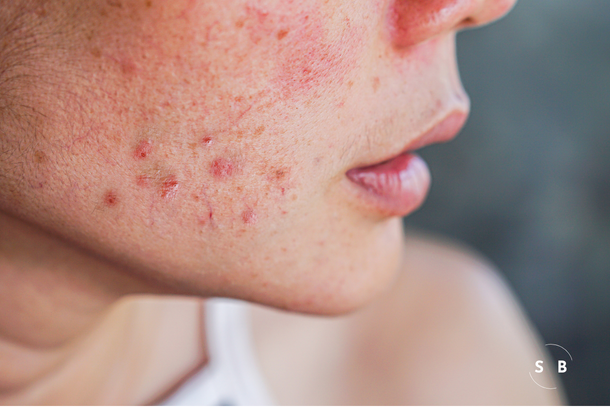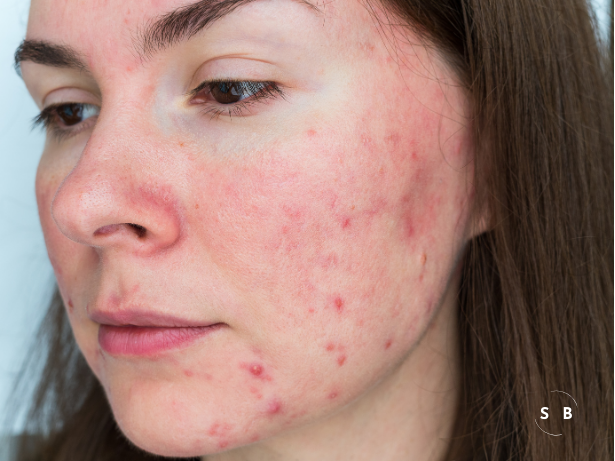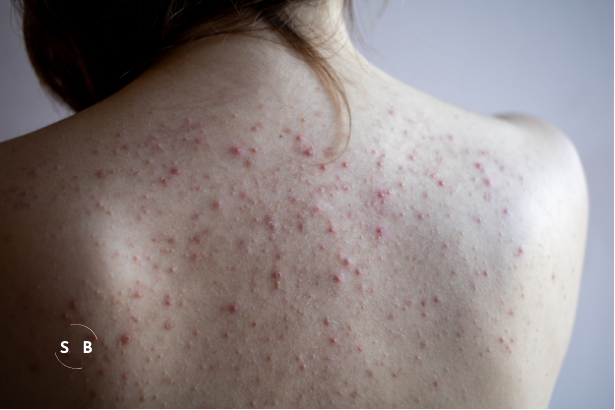Well, hello everyone! In today’s blog post, we’re going to talk about the possible reasons you may have dry skin. We have numerous posts on the best skincare products for dry skin, the best moisturizers, and what ingredients to look for, but in this post, we’re doing a deep dive into the potential underlying causes of dry skin. Often, addressing the root cause provides relief far beyond just searching the shelves for the perfect product.
What is Dry Skin?
Dry skin refers to skin that feels dry to the touch, occurring when the skin lacks moisture in the topmost layer, the stratum corneum. Dry skin often results from issues with the skin barrier’s integrity, leading to water loss. If dry skin begins in early childhood, it could be related to one of about 20 different dry skin conditions, known as ichthyoses. People with ichthyosis often have a family history of dry skin.
Common Causes of Dry Skin
1. Atopic Dermatitis
People with atopic dermatitis have a compromised skin barrier, making it prone to water loss and irritation. This condition often leads to flares of itchy rashes.
2. Aging
Those over 60 frequently experience dry skin. As we age, the stratum corneum’s ability to retain water declines, along with the skin’s barrier function, making it more vulnerable to moisture loss. For women post-menopause, declining estrogen levels further reduce the skin’s ability to retain moisture.
3. Hypothyroidism
Thyroid hormone plays a crucial role in regulating skin cell turnover. Dry skin, especially on the arms, legs, palms, and soles, is often one of the first signs. Hypothyroidism can also reduce sweat gland activity, making skin drier.
4. Kidney Disease
End-stage renal disease, especially in patients on dialysis, can cause extremely dry, rough, and scaly skin. This dryness might result from reduced sweat gland activity, oil gland atrophy, and frequent diuretic use, which impacts the skin’s natural moisturizing factors.
5. Malnutrition
Deficiencies in essential fatty acids or vitamin A can lead to dry skin. Malnutrition commonly presents with multiple deficiencies at once, often affecting skin health.
6. Cancer and Cancer Treatments
Blood cancers, such as leukemia and lymphoma, are associated with dry skin. Treatments like chemotherapy and radiation can also cause significant skin dryness.
Environmental Factors Contributing to Dry Skin
1. Cold Weather
Low humidity and increased indoor heating pull moisture from the skin. We often recommend using thicker creams after bathing and running a humidifier in your bedroom to help combat this.
2. Air Conditioning and Heat
Excessive air conditioning or sitting close to a space heater can dry out the skin.
3. Frequent Bathing
Bathing multiple times a day, especially with harsh soaps, can strip the skin of natural oils. Traditional bar soaps like Ivory and Irish Spring are harsh on the skin barrier and can dry it out. Opting for milder body washes can help, but excessive use of even these can still dry the skin.
4. Hard Water
Bathing in hard water, which contains high levels of calcium, can interfere with the skin’s natural barrier, leaving soap residue that contributes to water loss. Keeping showers short and using minimal cleansers can help reduce this effect.
5. Detergents and Irritants
Exposure to household and occupational irritants, such as laundry detergents and household cleaners, can dry the skin. Prolonged contact with water or irritants, like dish soap, can also lead to dryness, especially on the hands. Always wearing protective gloves can help reduce this effect.
Other Contributing Factors
1. Medications
Certain medications, such as diuretics, beta-blockers, and statins, can dry out the skin. For example, retinoids (like Accutane) are known to cause significant dryness, especially on the lips. Diuretics are commonly prescribed for blood pressure but can cause dryness as a side effect.
2. Kava
The plant-based beverage kava can cause dry skin, along with thickened calluses and hair loss. Though more common in certain regions, like Australia and the South Pacific, some people might experience these side effects.
3. Smoking and Excessive Friction
Smoking and any activity involving repeated friction on the skin can lead to dryness by wearing down the natural barrier, making it susceptible to water loss.
Dry Skin and Health: Why It Matters
Dry skin is more than a cosmetic concern. It reflects an impaired skin barrier. When dry skin develops tiny cracks, it becomes more vulnerable to bacterial and fungal infections. These cracks also increase the likelihood of irritants and allergens penetrating the skin, potentially triggering allergies.
Final Thoughts
Understanding the potential root causes of dry skin can be empowering. For many, like those with thyroid disease, addressing these root issues can truly transform their skin. Or, knowing that age, medication, or environmental factors play a role in dryness might allow for tailored skincare choices. With this knowledge, we hope you feel more equipped to address and understand your skin better.
For more tips on managing dry skin, check out our recent blog post about barrier creams—they can be a game-changer for dry skin. And as always, don’t forget sunscreen!








Leave a Reply